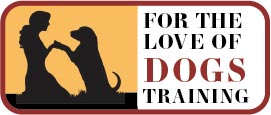Did you know that properly caring for your dog’s teeth and gums can add years to your pup’s life? According to Dr. Jan Bellows, a Diplomate of the American Veterinary Dental College, brushing your dog’s teeth daily can extend a dog’s life by up to four years. That’s four more years of companionship and love!
Just like us, dogs are prone to dental or periodontal disease. One of the first signs that something is amiss with your pooch’s gums and teeth is bad breath. You see, a dog’s mouth is the perfect storm for bacterial growth – it’s nice and warm and there are plenty of nutrients. Most bacteria are fine, but once plaque – a mix of bacteria, salivary polymers, and bits of white cells – begins to deposit on a dog’s teeth, it can lead to a host of problems. Chief among these are gum infections and loose or abscessed teeth. YIKES!
That’s not all. According to Dr. Bellows, the toxins that bad bacteria secrete cause damage to a dog’s kidney, cardiac, and brain tissue. Extended poor dental health often results in organ failure. There is a silver lining to this scary story. You, yes YOU, have the power to improve your dog’s dental health.
First, let’s talk a little about a dog’s oral anatomy. On average, adult dogs have 42 teeth and puppies have 28. As you look inside your dog’s mouth take a look at the upper jaw. Behind the very last molar, there are two additional teeth that angle into the dog’s mouth at about forty-five degrees. Why is this important? Because the number one way to improve your dog’s dental health is by brushing his or her teeth daily. Your goal with brushing is to interrupt or dislodge the bad, plaque-forming bacteria before it hardens into calculus on your dog’s teeth. It’s important to use a circular motion when brushing, just like you would do with your own teeth. Since a dog’s jaw and teeth are shaped differently than ours, he or she will have more bacteria developing on the facial or cheek side. And remember… You’ll need to angle your brush to catch the two hidden teeth behind the last molar on the upper jaw.
What is the best way to start? I recommend massaging the gums and teeth with a warm, dry washcloth. This helps desensitize and prepare your puppy or dog for the toothbrush. When you are ready to make the transition, remember to use the right size toothbrush – a small brush for a small mouth, etc. Add one of the many flavored dog toothpastes and you are set. It’s oh-so-important to be gentle and patient while brushing your dog’s teeth – it’s normal for your dog to resist. Try to make the tooth brushing sessions positive.
There are other, important things you can do to improve your dog’s oral health:
- Pet professionals uniformly agree that it’s important to feed your dog a well-balanced meat-based diet.Meat actually creates a healthier oral environment.
- Encourage your dog to actively exercise his or her teeth by chewing. Some of my dogs’ favorites are Himalayan dog treats or a Kong chew toy filled with treats. Real bones are an option, too, but it’s best to consult your veterinarian as some bones shatter easily (slivers) and others may be too hard (broken teeth).If you decide to provide real bones to your dog, be sure to ask your vet which size bone is best.
- Budget for and plan to have your dog’s teeth cleaned by a skilled veterinarian.The cost for this service generally ranges from $300 to $500. Depending on your dog’s needs, a dental cleaning occurs every 1-3 years.
Dogs are so special – they give us their all. In turn, we have the power to improve our dogs’ dental health, avoiding costly health issues and extending our beloved pooches’ lives by up to four years. Are you with me? Let’s get brushing!
